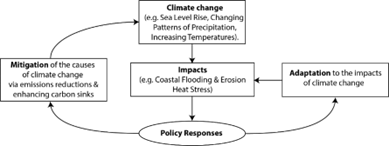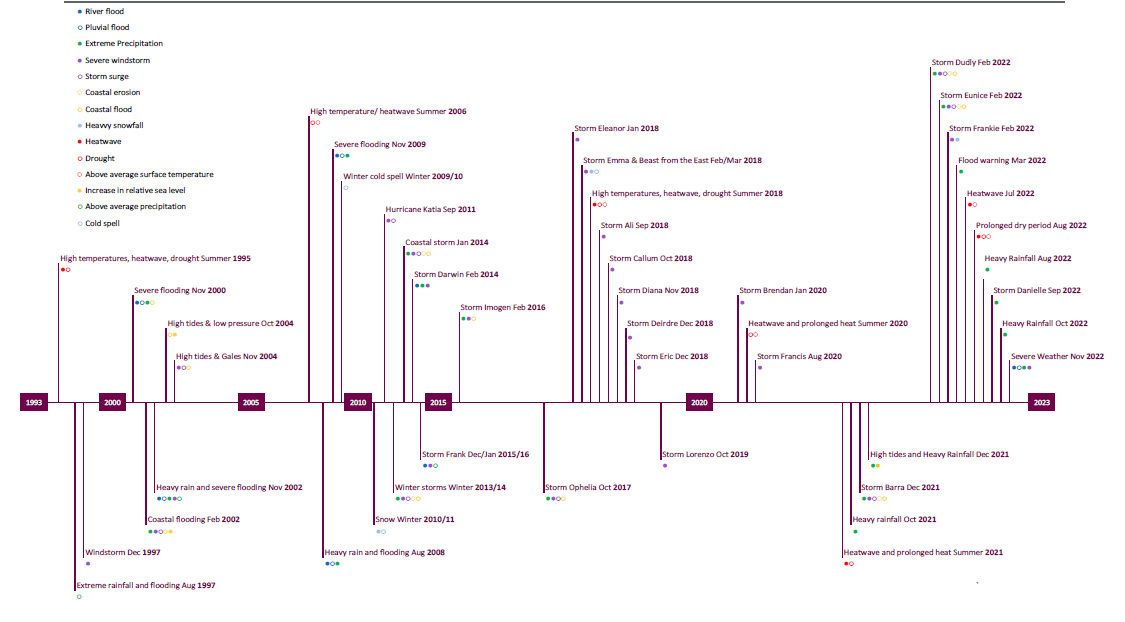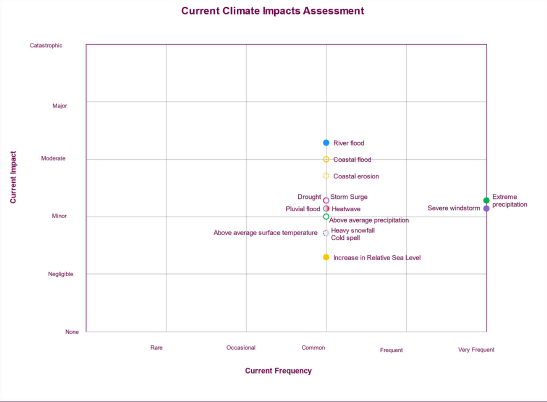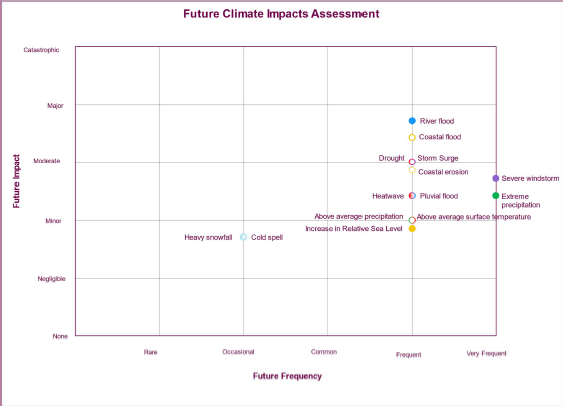Adapting to Climate Change
A question to bear in mind in this page -
What would you like the Council to do when it comes to adapting to future Climate Change?
What is Climate Adaptation?
Climate adaptation involves taking action to prepare for and adjust to the current and future impacts of climate change. A prime example is the erection of flood defences in coastal areas.
The government of Ireland has published the National Adaptation Framework to ensure Ireland is capable of adapting to climate change. This framework is statutorily backed up by the Climate Action and Low Carbon Development (Amendment) Act 2021. This act legally requires Ireland to reduce its greenhouse gas emissions by 51% by 2030 compared to 2018 levels.

The Government is publishing a national Climate Action Plan on a rolling basis to ensure Ireland meets its climate targets by sector. This plan is informed by the best available science and policy.
Where does the Council have influence?
- Through flood defence planning and schemes.
- Through the maintenance and improvement of transport routes.
- Through Parks and open spacing maintenance, planning and improvement.
- Through community engagement.
What is the national picture?
Rising Greenhouse Gas Emissions have unequivocally altered Ireland's climate. We are now seeing more regular milder wet winters, hotter summers, and an increase in extreme weather events. Ireland's climate is projected to change in line with global temperature projections.
As an island nation, Ireland is at particular risk of coastal flooding. There is a global estimation that, based on current Greenhouse Gas levels, global sea levels will rise by 1 metre by 2150 ( Maynooth University).
What is the current and projected local picture for climate change and adaptation?
Waterford is a coastal county, placing it at a heightened risk of coastal flooding. Pluvial (when the ground is saturated) and fluvial/river flooding are also likely to increase with worsening climate change.
Flood maps on the OPW's ( www.floodinfo.ie) website show varying scenarios for the city and county based upon projected precipitation levels. These maps will be used to guide flood adaptation measures. More flood defences are needed around the county.
Tidal surges and high spring tides currently impact coastal amenities and communities. Flood defences are in place in the city and flood prone areas throughout the county. These may need to be expanded upon in the coming years.
Winter storms and strong winds are causing sand to migrate in coastal areas, impacting roads and nearby amenities. Marram grass has been planted on sand dunes to stop this.
Higher temperatures during the summer months is likely to lead to acute temperature increases in urban areas, particularly where there are buildings that reflect/trap heat between them. Natural shading and cooling through urban greening can reduce the impacts of this problem.
 Extreme weather events experienced in Waterford since 1993
Extreme weather events experienced in Waterford since 1993
It is expected that many weather events will go from Common (occurs once in a 2-10 year period) to Frequent (occurs once in a 1-2 year period) and Very Frequent (occurs several times in a year)2320

Current Climate Impacts for Waterford - Source Waterford Climate Risk Assessment

Future Climate Risks for Waterford - Source Waterford Climate Risk Assessment
Coastal transport routes and those located along rivers are at a heightened risk of regular flooding with increasing climate change. The Council will need to engage in road raising projects in the coming years to address this.
Hotter summer temperatures may lead to depletion of quality in road surfaces, leading to issues such as potholes and bitumen slip. More resilient road material will need to be looked at to address these issues.
Colder weather and its associated impacts, such as snowfall and ice, may result in rural communities being isolated. The Council will continue to liaise with emergency services to ensure proper planning is in place for the winter months.
Where does the Council not have control?
The OPW and the National Parks and Wildlife Service are responsible for managing climate risk on the land they manage. The Council does not have influence over Climate Adaptation on private land.
What are other countries doing?
Sea level rise is a particular risk in low lying Denmark. The Danes have been collaborated with the community to come up with natural solutions. You can learn more here.
The city of Melbourne Australia is increasing canopy cover to 40% of the city area to facilitate cooling in extreme temperatures. You can learn more here.
The city of Penang has also been greening their city to reduce the Urban Heat Island effect. You can learn more here.
Pickering, Yorkshire has used natural methods to slow down flood waters and to prevent floods. These works have reduced the chances of there being a flooding event each year from 25% to 4%. You can learn more here.